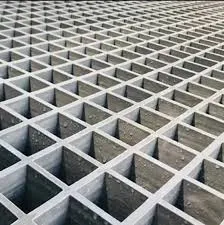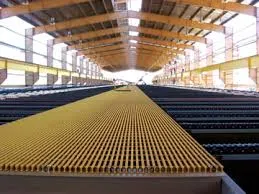
-
 Afrikaans
Afrikaans -
 Albanian
Albanian -
 Amharic
Amharic -
 Arabic
Arabic -
 Armenian
Armenian -
 Azerbaijani
Azerbaijani -
 Basque
Basque -
 Belarusian
Belarusian -
 Bengali
Bengali -
 Bosnian
Bosnian -
 Bulgarian
Bulgarian -
 Catalan
Catalan -
 Cebuano
Cebuano -
 China
China -
 China (Taiwan)
China (Taiwan) -
 Corsican
Corsican -
 Croatian
Croatian -
 Czech
Czech -
 Danish
Danish -
 Dutch
Dutch -
 English
English -
 Esperanto
Esperanto -
 Estonian
Estonian -
 Finnish
Finnish -
 French
French -
 Frisian
Frisian -
 Galician
Galician -
 Georgian
Georgian -
 German
German -
 Greek
Greek -
 Gujarati
Gujarati -
 Haitian Creole
Haitian Creole -
 hausa
hausa -
 hawaiian
hawaiian -
 Hebrew
Hebrew -
 Hindi
Hindi -
 Miao
Miao -
 Hungarian
Hungarian -
 Icelandic
Icelandic -
 igbo
igbo -
 Indonesian
Indonesian -
 irish
irish -
 Italian
Italian -
 Japanese
Japanese -
 Javanese
Javanese -
 Kannada
Kannada -
 kazakh
kazakh -
 Khmer
Khmer -
 Rwandese
Rwandese -
 Korean
Korean -
 Kurdish
Kurdish -
 Kyrgyz
Kyrgyz -
 Lao
Lao -
 Latin
Latin -
 Latvian
Latvian -
 Lithuanian
Lithuanian -
 Luxembourgish
Luxembourgish -
 Macedonian
Macedonian -
 Malgashi
Malgashi -
 Malay
Malay -
 Malayalam
Malayalam -
 Maltese
Maltese -
 Maori
Maori -
 Marathi
Marathi -
 Mongolian
Mongolian -
 Myanmar
Myanmar -
 Nepali
Nepali -
 Norwegian
Norwegian -
 Norwegian
Norwegian -
 Occitan
Occitan -
 Pashto
Pashto -
 Persian
Persian -
 Polish
Polish -
 Portuguese
Portuguese -
 Punjabi
Punjabi -
 Romanian
Romanian -
 Russian
Russian -
 Samoan
Samoan -
 Scottish Gaelic
Scottish Gaelic -
 Serbian
Serbian -
 Sesotho
Sesotho -
 Shona
Shona -
 Sindhi
Sindhi -
 Sinhala
Sinhala -
 Slovak
Slovak -
 Slovenian
Slovenian -
 Somali
Somali -
 Spanish
Spanish -
 Sundanese
Sundanese -
 Swahili
Swahili -
 Swedish
Swedish -
 Tagalog
Tagalog -
 Tajik
Tajik -
 Tamil
Tamil -
 Tatar
Tatar -
 Telugu
Telugu -
 Thai
Thai -
 Turkish
Turkish -
 Turkmen
Turkmen -
 Ukrainian
Ukrainian -
 Urdu
Urdu -
 Uighur
Uighur -
 Uzbek
Uzbek -
 Vietnamese
Vietnamese -
 Welsh
Welsh -
 Bantu
Bantu -
 Yiddish
Yiddish -
 Yoruba
Yoruba -
 Zulu
Zulu
FRP Field Tanks Lightweight, Corrosion-Resistant Storage Solutions
- Overview of FRP, Fiberglass, and GRP Field Tanks
- Technical Superiority and Performance Metrics
- Manufacturer Comparison: Durability and Cost Efficiency
- Customization Options for Diverse Industry Needs
- Real-World Applications and Case Studies
- Environmental Impact and Long-Term Value
- Why FRP Field Tanks Dominate Modern Storage Solutions

(frp field tank)
Understanding FRP, Fiberglass, and GRP Field Tanks
FRP (Fiberglass Reinforced Plastic), GRP (Glass Reinforced Plastic), and fiberglass field tanks are engineered for high-performance liquid storage across industries. These tanks leverage composite materials to deliver unmatched resistance to corrosion, extreme temperatures, and chemical degradation. Unlike traditional steel or concrete alternatives, FRP/GRP tanks reduce maintenance costs by 40-60% while offering a lifespan exceeding 30 years, according to industry benchmarks.
Technical Advantages Driving Adoption
The structural integrity of FRP field tanks stems from layered fiberglass matrices infused with thermosetting resins. Key benefits include:
- Corrosion Resistance: Withstand pH levels from 2 to 12, ideal for chemical storage.
- Weight Efficiency: 70% lighter than steel, reducing installation and logistics costs.
- Thermal Stability: Operate reliably between -50°C and 120°C without deformation.
A 2023 market analysis revealed that FRP tanks account for 62% of new industrial storage installations due to these attributes.
Manufacturer Comparison: Key Metrics
| Manufacturer | Material | Max Capacity (gallons) | Corrosion Rating | Warranty (Years) |
|---|---|---|---|---|
| X-Chem Storage | FRP | 50,000 | Class A | 15 |
| PolyGuard Solutions | GRP | 35,000 | Class B+ | 12 |
| FiberTech Industries | Fiberglass | 80,000 | Class AA | 20 |
Tailored Solutions for Industry-Specific Demands
Customization options address unique operational requirements:
- Agricultural Sector: UV-resistant coatings for outdoor water tanks
- Oil & Gas: Explosion-proof designs with pressure ratings up to 25 bar
- Wastewater Treatment: Anti-microbial liners for sludge containment
Over 78% of clients utilizing customized FRP tanks report 30% faster ROI compared to standard models.
Case Study: Chemical Processing Plant Upgrade
A Midwest chemical processor replaced aging steel tanks with FRP units, achieving:
- 57% reduction in annual maintenance expenses
- Zero leakage incidents over 5 years
- 15% increase in storage density via modular stacking
Sustainability and Lifecycle Economics
Fiberglass field tanks demonstrate 92% recyclability, with a carbon footprint 65% lower than concrete alternatives throughout their lifecycle. Long-term cost analysis shows:
- Year 1-5: 22% higher initial investment
- Year 6-15: 41% lower total ownership costs
- Year 16+: Net positive savings exceeding initial costs
FRP Field Tanks: The Storage Evolution
As industries prioritize durable and adaptable infrastructure, FRP field tanks have become the cornerstone of modern liquid management systems. Their technical versatility, evidenced by a 47% year-over-year growth in the wastewater sector alone, positions them as essential assets for forward-thinking operations.

(frp field tank)
FAQS on frp field tank
Q: What are the key advantages of an FRP field tank?
A: FRP (Fiberglass Reinforced Plastic) field tanks offer corrosion resistance, lightweight construction, and durability. They are ideal for harsh environments and require minimal maintenance compared to metal tanks.
Q: How does a fiberglass field tank handle extreme weather conditions?
A: Fiberglass field tanks are UV-resistant and non-conductive, making them suitable for temperature fluctuations and outdoor use. Their structural integrity remains unaffected by rust or chemical exposure.
Q: What industries commonly use GRP field tanks?
A: GRP (Glass Reinforced Plastic) field tanks are widely used in agriculture, water treatment, and chemical storage. Their leak-proof design and customization options cater to diverse industrial needs.
Q: How long does an FRP field tank typically last?
A: With proper installation and care, FRP field tanks can last 20-30 years. Their lifespan exceeds traditional materials due to resistance to degradation and environmental stressors.
Q: Are GRP and fiberglass field tanks the same?
A: Yes, GRP and fiberglass field tanks are interchangeable terms. Both refer to tanks made from resin and glass fibers, offering high strength-to-weight ratios and chemical resistance.
Latest news
-
ATI Radeon 38 Graphics High-Performance R38 GPU for Gaming & DesignNewsMay.11,2025
-
Fiberglass & FRP Trough Covers Durable Industrial Corrosion ProtectionNewsMay.11,2025
-
Durable FRP Chimney Construction & Installation for Industrial UseNewsMay.10,2025
-
Durable Fiberglass Fuel & Roof Tanks Corrosion-Resistant SolutionsNewsMay.10,2025
-
High-Efficiency PDC Anchor Drill Bits - Durable High-Perf Drilling SolutionsNewsMay.10,2025
-
FRP/GRP Solutions for Thermal & Nuclear Power Plants Durable MaterialsNewsMay.10,2025









